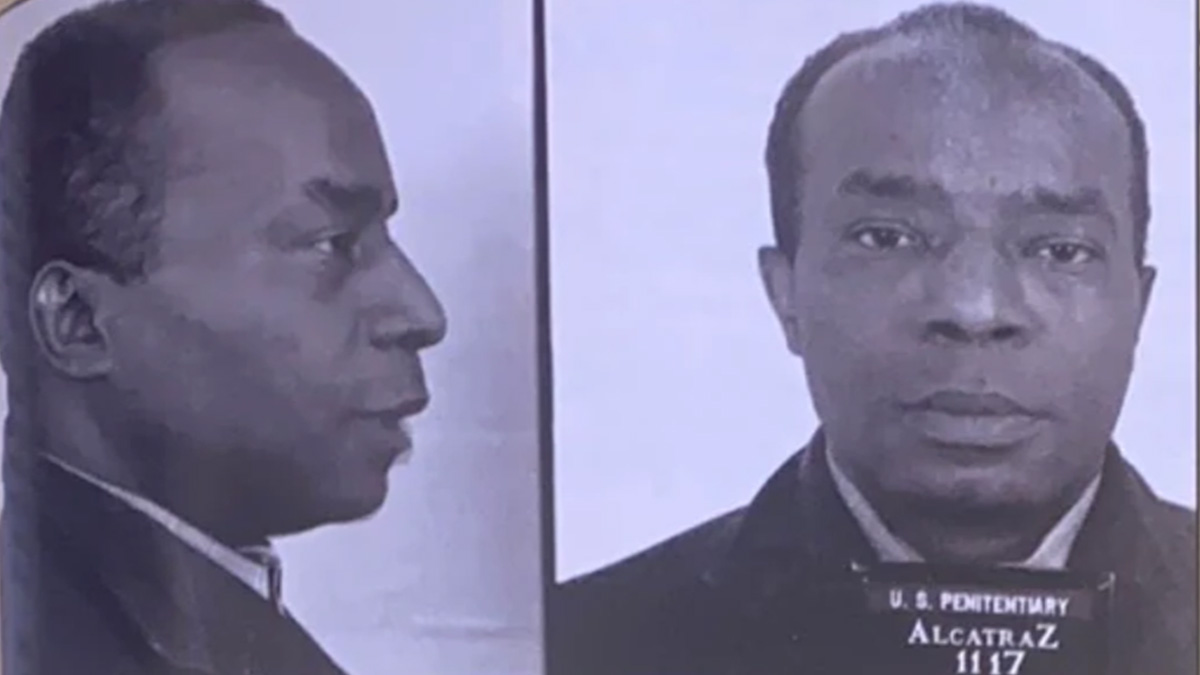It’s always frustrating to come across some glorious piece of history that the American public school system failed to teach. Bumpy Johnson, the “Godfather of Harlem” is one of those who should have been just as popular Frank Costello – the inspiration behind Vito Corleone – and yet there isn’t a whole trilogy dedicated to his criminal contributions.
Beyond his outlaw lifestyle, Johnson was a generous man and a staple champion of Harlem’s Black community. He dined with socialites, hosted civil rights leaders, and helped build up his community until his death in 1968.
The Godfather of Harlem might finally be shedding some light on the gangster who fed the poor with one hand while punching out the mob with the other, but as usual, fact is so much better than fiction.
Bumpy Johnson’s childhood
Ellsworth “Bumpy” Raymond Johnson was born in Charleston, South Carolina in 1905. His strange nickname has multiple alleged origins. Family members claimed that the name came from his tenacity; since he “took the bumps of life” so well, his family christened him “Bumpy.” Other claims say he had a slight skull deformation as a child, and the nickname stuck from a young age. The family lived in the South during the Jim Crow Era, a period of racial segregation and violent oppression of Black Americans. When Johnson was 10, his older brother Willie was accused of murdering a white man, and fearing reprisal, the Johnsons sent him to New York to live with an aunt.
After his brother was sent away, Bumpy Johnson started skipping class and lashing out. Unable to tame the wild child, they sent him to New York to live with his brother and older sister in 1919. The move to New York did nothing to change Johnson’s attitude, and he continued to get into fights, skip school, and make trouble. He was bullied by the local children for his short height and bumpy head, but Johnson wasn’t one to stand down from a fight. In the city, he was able to make money off of his bad behavior. He hustled in pool, swept sidewalks, and delivered newspapers – and even sent money home to his parents.
The start of Bumpy Johnson’s gang
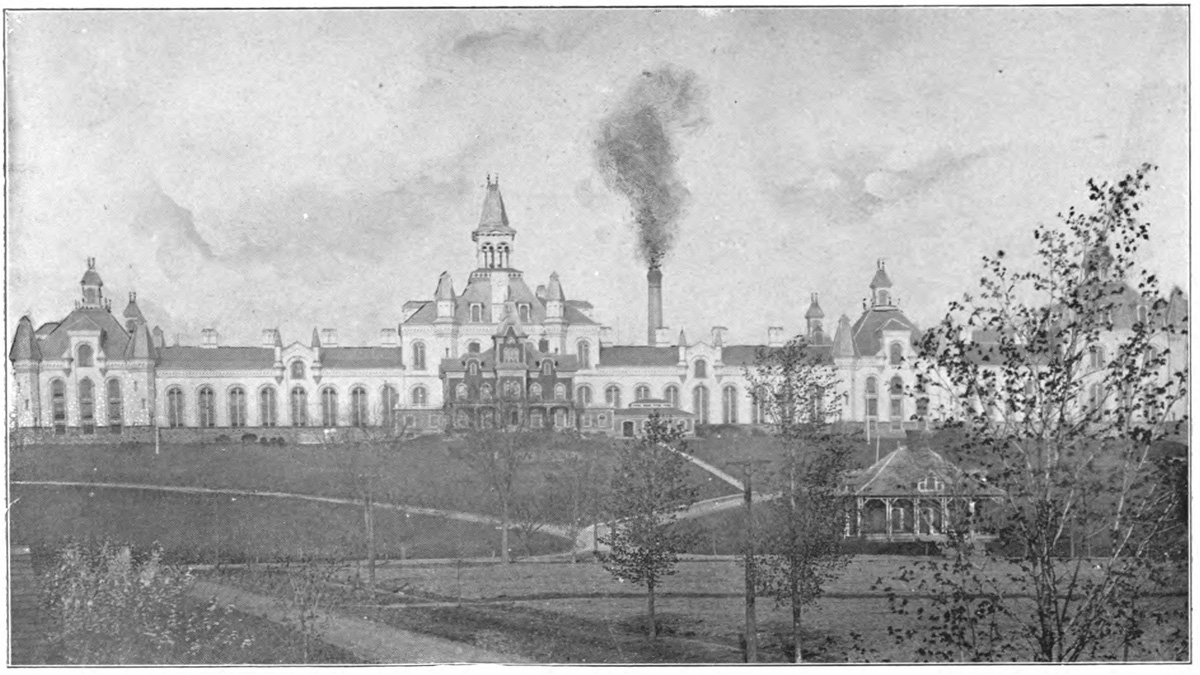
At 16, Johnson took a major step in building his gang. Johnson, just like the Italian and Irish gangsters whose territory bordered Harlem, started offering protection services to the Black-owned businesses around him. It was a bold move that put him at odds with the much older William “Bub” Hewlette, the main enforcer for Dutch Schultz, a German-Jewish mobster. Hewlette liked the cut of Johnson’s jib, and the two struck up an unlikely partnership.
By 17, Bumpy’s behavior landed him in the Elmira Reformatory, but the reform school never managed to set him straight.
In the following years, Johnson branched into armed robberies, extortions, and pimping. He was one of the most sought-after bodyguards in the borough. Constantly in and out of jail, he built a name for himself until he was nabbed for grand larceny and went to jail in 1930. When he was released two years later, his modest empire was gone, and he was penniless.
Bumpy Johnson and Stephanie St. Claire
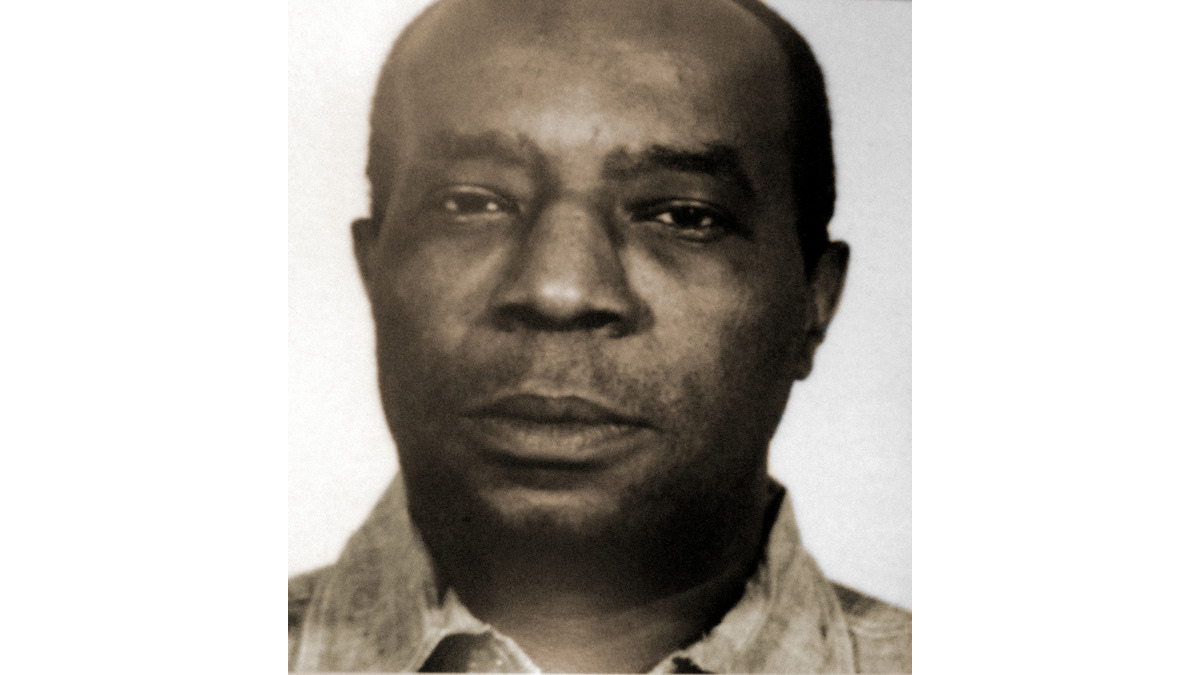
It wasn’t long before Johnson met Stephanie St. Claire, the “Numbers Queen” and the leader of the 40 Thieves gang. As an up-and-coming mob boss, St. Claire had plenty of enemies, and Johnson’s fierce reputation made him the perfect right-hand man. What she didn’t expect was a man just as intelligent as he was dangerous, and the two became fast friends. Johnson was deeply loyal to his new boss, who frequently butted heads with Dutch Schultz. The result was a drawn-out and bloody gang war.
Johnson’s wife, Mayme, later said it was a “guerilla war of sorts,” as Johnson and his crew of just 9 men picked off Schultz’s gang one by one. All told, Johnson killed or kidnapped 40 men before the end of the feud. Schultz’s reign came to an end when fellow mob boss Lucky Luciano, head of the Italian Mafia, ordered his death. Luciano then struck a deal with Johnson; for a cut of the profits, the mafia would leave him and St. Claire alone (though she left the business shortly after), and Harlem would be Johnson’s.
Johnson’s agreement with the mob didn’t please everyone, but for the first time, a Black man had stood up to the white mob and lived. Johnson was christened the “Godfather of Harlem,” and maintained a lifelong friendship with Lucky Luciano. They two were frequently seen playing chess together.
Time as the “Godfather of Harlem”
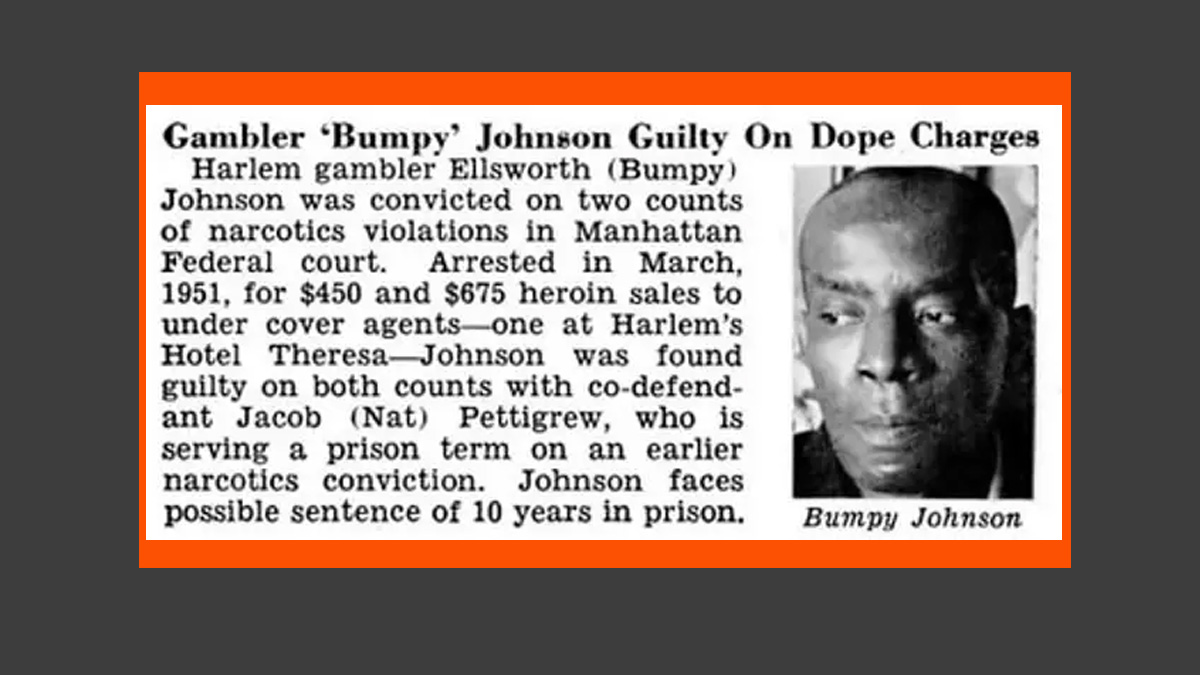
According to Mayme, anything that happened in Harlem required a seal of approval from Johnson. His temper was quick when it came to those who had slighted him. He stabbed his rival, Ulysses Rollins, more than 30 times in one sitting. In another altercation, he badly beat Rollins, knocking his eye loose from the socket. Upon seeing the dangling ligament, Bumpy remarked that he “suddenly had a taste for spaghetti and meatballs.”
Johnson lived life like a celebrity. He wore custom suits and luxury ties, had a whirlwind affair with socialite and Editor Helen Lawson, and was even featured in Jet Magazine. He was also incredibly generous within his community. He provided food for his struggling neighbors, delivered turkey dinners at Thanksgiving, and threw lavish community Christmas parties.
He was known to encourage kids to stay in school, and often spoke of his love for learning, and regret for never finishing school. For twenty years he ruled the city and built his wealth through the Numbers Game, drug trade, and protection business. He was busted for dealing heroin in 1951, and sent to prison for 15 years. While he maintained his role as boss from prison, many things changed for the borough in the years he was away.
The end of Johnson’s life
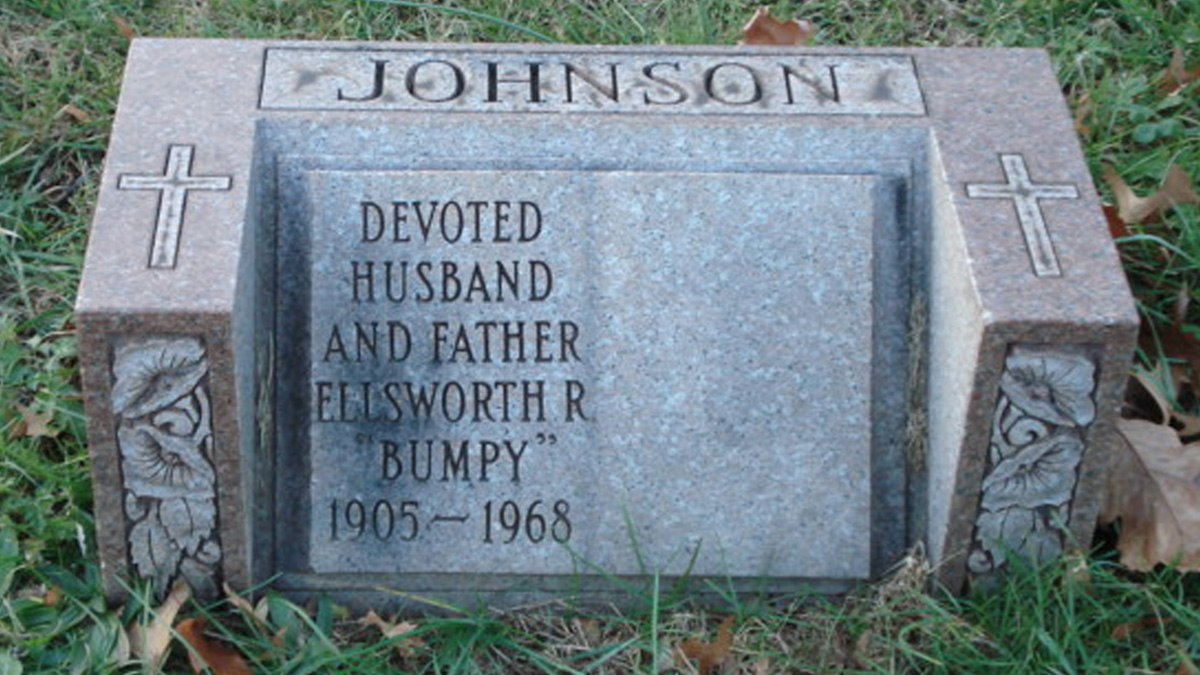
Johnson served his full sentence in Alcatraz. While it’s believed he helped Frank Morris and the Anglin brothers escape from The Rock, Johnson remained to finish his sentence. His wife believed it was so he could live life as a free man. By the time he was released in 1963, Harlem had been ravaged by the heroin epidemic. Civil rights leader Malcolm X tried to bring attention to the state of the once-thriving borough. Johnson offered his longtime friend protection from X’s previous associates, The Nation of Islam. While he initially accepted, X feared the optics of using mobsters as protection. Just weeks after he waived Johnson’s protection, he was assassinated.
Despite his violent life, Johnson died of a heart attack in 1968 while dining late into the night with some of his closest friends. His funeral was attended by thousands of people. It’s estimated that he had a fortune of more than $100 million when he died.

